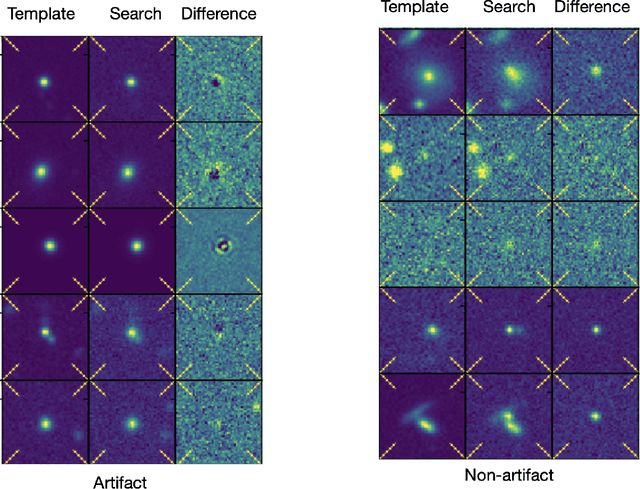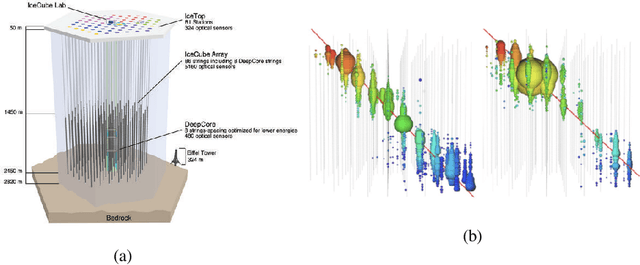Venkitesh Ayyar
Identifying Transients in the Dark Energy Survey using Convolutional Neural Networks
Mar 18, 2022



Abstract:The ability to discover new transients via image differencing without direct human intervention is an important task in observational astronomy. For these kind of image classification problems, machine Learning techniques such as Convolutional Neural Networks (CNNs) have shown remarkable success. In this work, we present the results of an automated transient identification on images with CNNs for an extant dataset from the Dark Energy Survey Supernova program (DES-SN), whose main focus was on using Type Ia supernovae for cosmology. By performing an architecture search of CNNs, we identify networks that efficiently select non-artifacts (e.g. supernovae, variable stars, AGN, etc.) from artifacts (image defects, mis-subtractions, etc.), achieving the efficiency of previous work performed with random Forests, without the need to expend any effort in feature identification. The CNNs also help us identify a subset of mislabeled images. Performing a relabeling of the images in this subset, the resulting classification with CNNs is significantly better than previous results.
The use of Convolutional Neural Networks for signal-background classification in Particle Physics experiments
Feb 13, 2020



Abstract:The success of Convolutional Neural Networks (CNNs) in image classification has prompted efforts to study their use for classifying image data obtained in Particle Physics experiments. Here, we discuss our efforts to apply CNNs to 2D and 3D image data from particle physics experiments to classify signal from background. In this work we present an extensive convolutional neural architecture search, achieving high accuracy for signal/background discrimination for a HEP classification use-case based on simulated data from the Ice Cube neutrino observatory and an ATLAS-like detector. We demonstrate among other things that we can achieve the same accuracy as complex ResNet architectures with CNNs with less parameters, and present comparisons of computational requirements, training and inference times.
 Add to Chrome
Add to Chrome Add to Firefox
Add to Firefox Add to Edge
Add to Edge